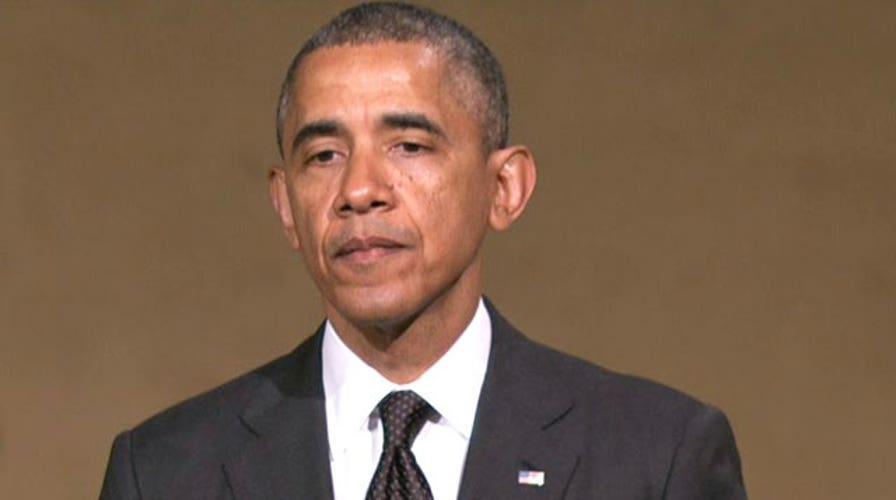President Obama addresses 9/11 museum dedication
President pays tribute to heroes, victims, survivors and families
President Barack Obama marked the opening of the National September 11 Memorial Museum in New York City Thursday by recounting acts of heroism and the future generations that will benefit by learning about the lives of those killed during the 2001 terror attacks.
Obama, who was introduced by former New York City Mayor Michael Bloomberg, told the audience that the museum offers visitors a moving experience and a sacred place of healing and hope.
"A nation that stands tall and united and unafraid because no act of terror can match the strength, the character of our country," he said. He continued, "Those we lost live on in us."
The museum and memorial plaza above, which opened in 2011, were built for $700 million in donations and tax dollars. Work on the museum was marked by construction problems, financial squabbles and disputes over its content, as well as the appropriate way to honor the dead, but its leaders see it as a monument to unity and resilience.
Former President George W. Bush issued a statement saying the museum "will help ensure that our nation remembers the lessons of Sept. 11."
Obama was joined in New York by Bloomberg, Gov. Andrew Cuomo and families of the fallen.
He recalled the story of Welles Crowther, a man who wore a red bandana as he ran into the World Trade Center to bring the wounded to safety until the tower collapsed. Crowther died while saving others. One of his signature bandanas is on display at the memorial.
"Here we tell their story so that generations yet unborn will never forget," Obama said. "Of coworkers who led others to safety. Passengers who stormed the cockpit. Men and women in uniform who rushed into an inferno. First responders who charged up those stairs. A generation of service members, our 9/11 generation, who have served with honors and more than a decade of war."
Visitors start in an airy pavilion where the rusted tops of two of the World Trade Center's trident-shaped columns shoot upward. From there, museumgoers descend stairs and ramps, passing through a dark corridor filled with the voices of people remembering the day and past the battered "survivors' staircase" that hundreds used to escape the burning towers.
At the base level, 70 feet below ground, amid remnants of the skyscrapers' foundations, there are such artifacts as a mangled piece of the antenna from atop the Trade Center and a fire truck with its cab shorn off.
Then, galleries plunge visitors into the chaos of Sept. 11: fragments of planes, a set of keys to the Trade Center, a teddy bear left at the impromptu memorials that arose after the attacks, the dust-covered shoes of those who fled the skyscrapers' collapse, emergency radio transmissions and office workers calling loved ones, even a recording of an astronaut solemnly describing the smoke plume from the International Space Station.
Sprinkled in are snippets about the 19 hijackers, including photos of them on an inconspicuous panel.
The Associated Press contributed to this report


